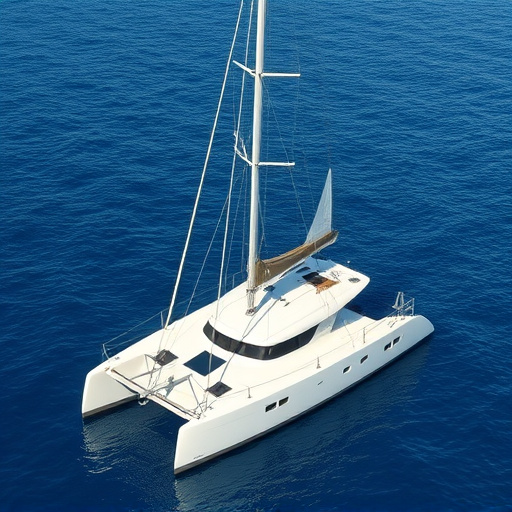A catamaran, named from the Tamil "two ships," is a watercraft with two hulls connected by a platform, offering superior stability, maneuverability, speed, and safety. Known for expansive decks and diverse living spaces, they're ideal for cruising and on-water activities. Building one requires careful design, selecting materials like fiberglass or wood, assembling components including mast, sail, motor, and steering system, adhering to local navigation standards, and thorough testing for stability and buoyancy.
A catamaran, a versatile and stable watercraft with two hulls, offers a unique sailing experience. This guide explores the essence of catamarans and provides a comprehensive step-by-step plan for building your own. From understanding key components like masts, sails, and rudders to selecting suitable materials and tools, you’ll discover the intricacies of construction. Learn essential tips for successful assembly, ensuring a robust and seaworthy vessel. Whether a hobbyist or enthusiast, this guide empowers you to embark on the thrilling journey of catamaran building.
- What is a Catamaran?
- Understanding the Key Components of a Catamaran
- Step-by-Step Guide to Building Your Own Catamaran
- Final Considerations and Tips for Successful Construction
What is a Catamaran?

A catamaran is a type of vessel that has two hulls joined by a platform or deck. It’s a unique watercraft known for its stability and maneuverability, making it a popular choice for both recreational boating and sailing. The term “catamaran” originates from the Tamil word “kaa-thamanar,” meaning “two ships.” This design offers several advantages over traditional monohull boats, including increased speed, better balance, and enhanced safety due to its dual hulls. Catamarans are often characterized by their spacious decks, which provide ample living and leisure areas, making them ideal for extended cruising and entertaining on the water.
Understanding the Key Components of a Catamaran

A catamaran is a type of vessel that has two hulls joined by a platform or deck, offering several advantages over monohull boats, such as increased stability and maneuverability. Understanding the key components of a catamaran is essential for anyone looking to build one or appreciate their unique design.
The primary components include the hulls, which provide buoyancy and support, and the connecting structure, typically a broad beam or platform that supports the deck and accommodates living quarters, storage, and seating. Rigging and sails are crucial for propulsion, with configurations varying based on the type of catamaran—displacing, planing, or hybrid. Additionally, navigation systems, safety equipment, and comfort features like cushions and shade structures play vital roles in modern catamarans, enhancing their functionality and appeal for various water activities.
Step-by-Step Guide to Building Your Own Catamaran

Building your own catamaran is an exciting project for any boating enthusiast. Here’s a simplified step-by-step guide to help you bring this unique vessel to life.
Start by designing your catamaran, considering factors like size, number of hulls, and desired features. Choose materials wisely; fiber glass or wood are common choices for the hulls. Cut and shape the hulls according to your design, ensuring a smooth finish. Next, construct the deck and cabin using lightweight yet sturdy materials. Install essential components such as the mast, sail (if intended for sailing), motor, and steering system. Rigging and wiring should follow, ensuring all systems are secure and functional. Test each component thoroughly before moving on to the next stage. Finally, add finishing touches like seating, navigation tools, and any desired amenities while keeping weight in mind for stability.
Final Considerations and Tips for Successful Construction

When building your own catamaran, it’s crucial to factor in final considerations that can make or break your project. First, ensure your design aligns with local regulations and safety standards, especially for navigation in open waters. Consider factors like stability, buoyancy, and structural integrity—the backbone of a successful catamaran.
Before starting construction, gather all necessary materials and tools, double-checking specifications to avoid costly errors later. Maintain meticulous records throughout the building process, from cut lists to assembly steps. Regularly inspect each component for quality control, addressing any issues promptly. Lastly, test your catamaran in varying conditions to fine-tune its performance and ensure a smooth sailing experience.
Building your own catamaran can be an exciting and rewarding endeavor, offering a unique boating experience. By understanding the key components and following a structured guide, you can create a sturdy and stable vessel. The process involves careful planning, selecting appropriate materials, and mastering construction techniques. With dedication and the right knowledge, you’ll soon be sailing smoothly on the open waters, enjoying the freedom and beauty that a catamaran provides. So, why wait? Get ready to embark on your nautical adventure and explore the world from a whole new perspective.
